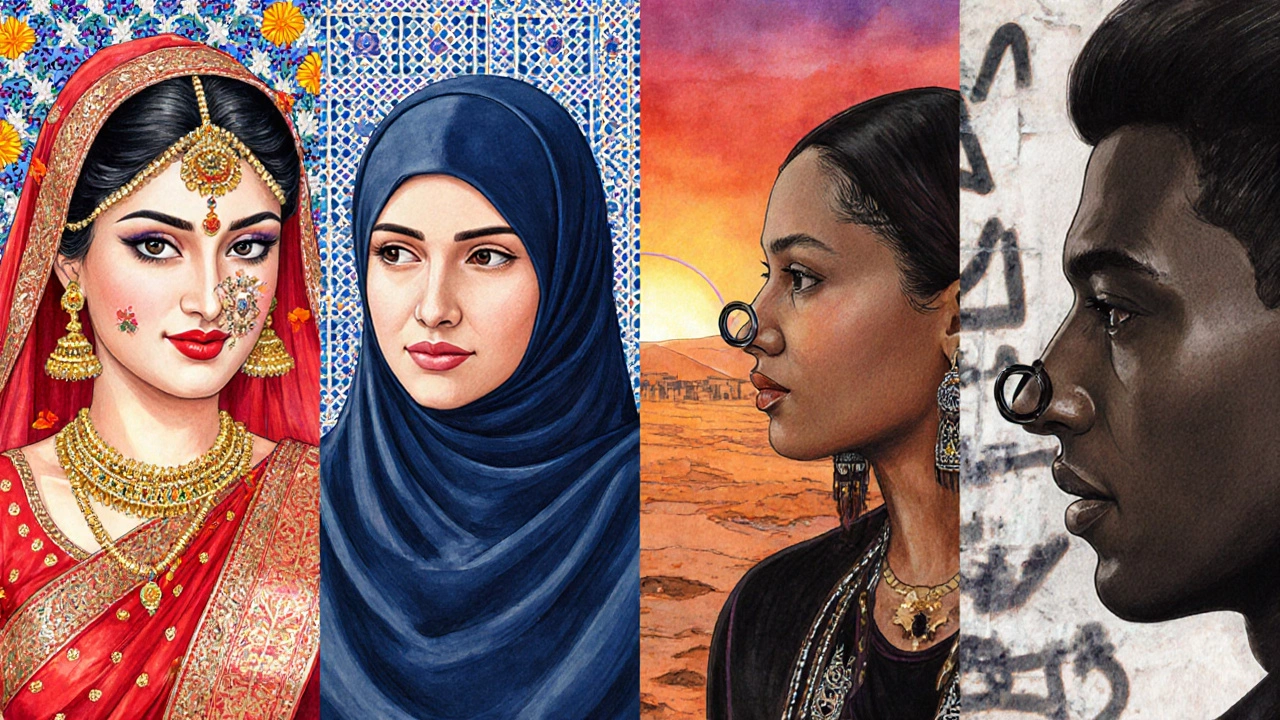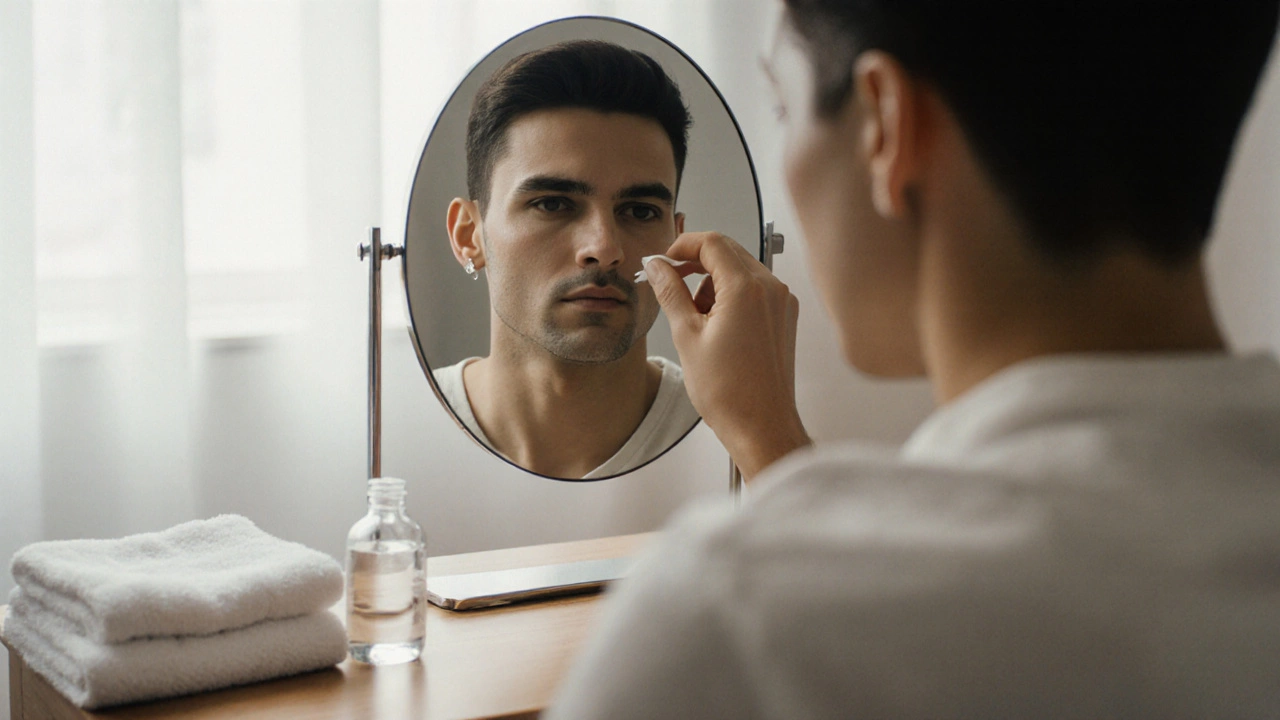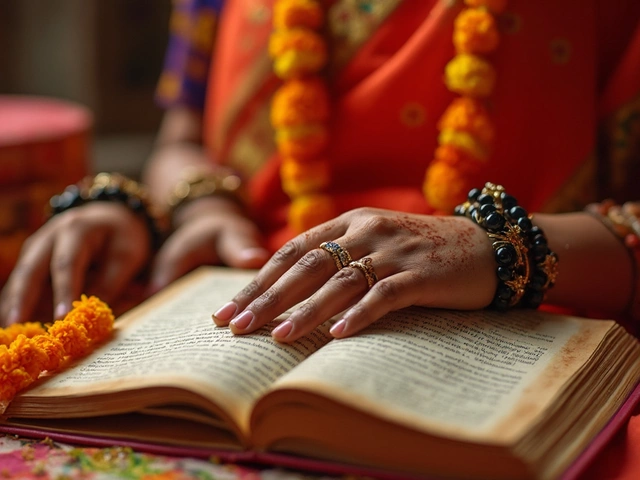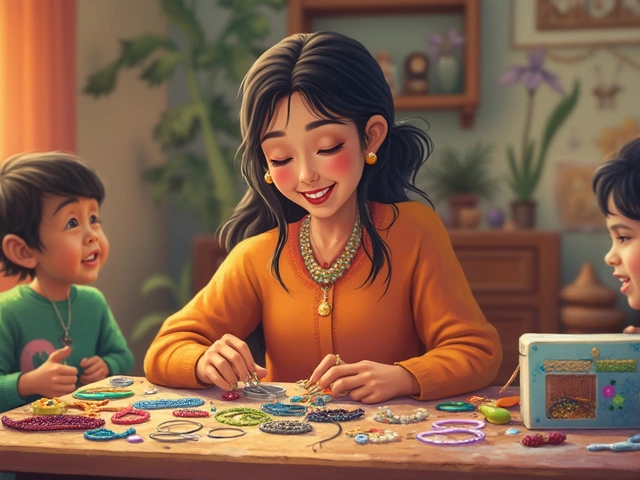
Nose Piercing Symbolism Explorer
Select a region to explore its nose piercing symbolism:
Understanding Nose Piercing Symbolism
Nose piercings carry deep cultural significance that varies widely across societies. They can represent identity, protection, social status, or personal expression. Explore the meanings associated with different regions below.
Symbolism Details
Select a region above to see detailed symbolism information.
Design Symbolism Guide
- Stud Subtle Confidence
- Hoop Feminine Tradition
- Septum Ring Rebellion & Freedom
- Nath Marriage & Honor
People ask, "What does a nose piercing symbolize?" The answer isn’t one‑size‑fits‑all. From ancient rites to runway trends, the tiny adornment carries layers of meaning that shift with time, place, and personal intent.
Quick Takeaways
- Historically, nose piercings marked marital status, tribal affiliation, and spiritual protection.
- In South Asia, the left nostril is linked to fertility; in the Middle East, it often signals cultural identity.
- Modern wearers use the piercing to signal fashion savvy, personal rebellion, or self‑expression.
- Choosing a design that aligns with the meaning you want can deepen the personal impact.
- Proper after‑care preserves both health and symbolism.
Defining the Central Symbol
Nose piercing is a form of body modification where a decorative piece is inserted through the nostril or septum. While the act itself is simple, its roots reach deep into human culture.
Historical Roots of Nose Piercing
Archaeological evidence shows nose piercings in the Indus Valley (c. 2500BC) and in ancient Egyptian tombs, where jewelry indicated status. By the 6thcenturyBC, body modification as a cultural marker spread across the Indian subcontinent, where it cemented ties to community and faith.
In the Ottoman era, travelers noted that Turkish women wore gold or silver nose studs to show they were married and to ward off evil spirits. The practice migrated to North Africa and the Middle East, adapting to local customs while retaining its core symbolism.

Cultural Symbolism Across Regions
Below is a snapshot of how different societies interpret the tiny adornment.
| Region | Traditional Meaning | Modern Twist |
|---|---|---|
| South Asia (India, Pakistan, Nepal) | Marital status, fertility, protection of the female reproductive system | Fashion statement, heritage pride, feminist reclaiming |
| Middle East (Arab world, Iran) | Cultural identity, sign of modesty, sometimes a tribal marker | Urban style, celebrity influence, blending tradition with streetwear |
| Africa (Berber, Maasai) | Rite of passage, clan affiliation, spiritual protection | Global fashion, tourism‑driven aesthetics |
| Western countries | Personal rebellion, alternative subculture (punk, goth) | Mainstream trend, celebrity endorsement, body‑positive movement |
The table illustrates that while the central motif stays the same, meanings gravitate around three pillars: identity, protection, and status.
Cultural symbolism in Daily Life
In India, a newly‑wed woman often receives a nath (a decorative nose ring) that rests on the left nostril-a spot associated with the reproductive organ in Ayurvedic medicine. The belief is that the ring balances hormonal flow and wards off illness.
Among the Berber women of Morocco, the piercing is more than jewelry; it’s a visual declaration of belonging to a specific tribe. Each tribe may prefer a distinct gauge or ornamental style, turning the nose into a portable identifier.
In contemporary Western culture, the same piece can signal a personal statement. A minimalist stud might say, “I’m confident in my skin,” whereas a bold septum ring could shout, “I challenge norms.” The fluidity of meaning reflects the wearer’s intent.
When Personal Meaning Takes Center Stage
People now choose nose piercings for reasons unrelated to heritage. Here are common personal motives:
- Self‑expression: Embracing a look that feels authentic.
- Identity marker: Highlighting a gender journey or cultural reclamation.
- Spiritual reminder: Some wear a simple hoop as a talisman for mindfulness.
Whatever the driver, the symbolism becomes a private contract between the wearer and their own story.

Choosing a Design That Aligns With Your Desired Symbol
Below are popular styles and the symbolism they commonly convey:
- Stud: Subtle, everyday confidence; often chosen for professional settings.
- Hoop: Classic femininity; in South Asia, a larger hoop can denote married status.
- Septum ring: Edge‑culture vibe; can symbolize breaking free from conformity.
- Nath (nose chain): Traditional Indian bridal look; represents wealth and family honor.
If you want your piercing to echo a cultural narrative, research the specific styles used in that community-materials, placement, and even gemstone choice can add layers of meaning.
After‑Care: Preserving Both Health and Symbolism
The symbolism stays strong when the piercing heals cleanly. Follow these basics:
- Clean the area twice daily with a saline solution (½tsp salt in 8oz warm water).
- Avoid touching the jewelry with unwashed hands; bacteria can turn a meaningful piece into an infection.
- Remove the jewelry only after the initial 6‑8weeks, unless you’re swapping styles for a specific meaning.
- Watch for redness, swelling, or discharge; consult a professional piercer if symptoms persist.
Healthy healing ensures the symbol endures, keeping the story you intend to tell intact.
Mini FAQ - Your Burning Questions Answered
Does a nose piercing always mean married status?
No. While in many parts of South Asia the left‑nostril stud traditionally signals marriage, the same jewelry can be worn by single women, tourists, or anyone who likes the look. Context matters more than the jewelry itself.
Can I choose a nose piercing for spiritual reasons?
Absolutely. Many cultures view the nose as a gateway for breath and life force. Wearing a simple hoop or crystal stud can serve as a daily reminder of mindfulness or protection.
Is the symbolism lost if I change the jewelry later?
It depends on the meaning you attached. A cultural marker like a nath tied to marital status stays relevant as long as it’s visible. Personal meanings are fluid-changing the piece can signal a new phase or evolving identity.
What material should I pick to honor a specific tradition?
Gold and silver are common in Indian and Middle Eastern traditions. Some Berber tribes prefer brass or copper. Research the community’s preferred metal to keep the symbolism authentic.
Is nose piercing painful?
Most people describe a quick pinch followed by a mild throbbing. The pain level varies by placement-nostril piercings tend to feel less intense than septum piercings.
Wrapping Up the Symbolic Journey
Whether you trace the lineage back to ancient temples or simply love the way a tiny stud catches the light, nose piercing symbolism is a blend of history, culture, and personal narrative. Understanding the layers behind the jewelry lets you wear it with intention, turning a modest accessory into a powerful story on your skin.


